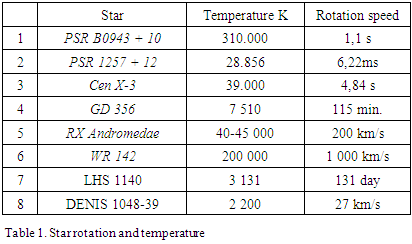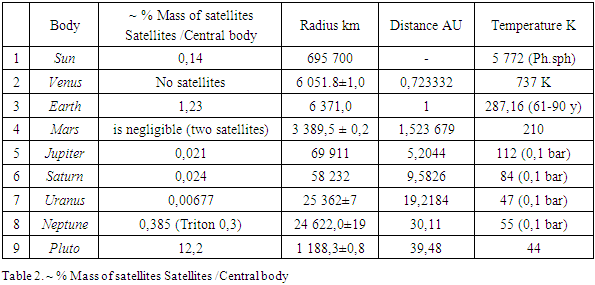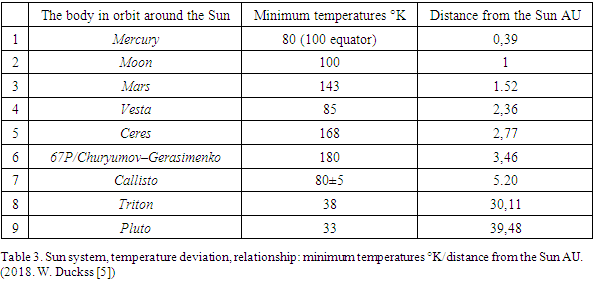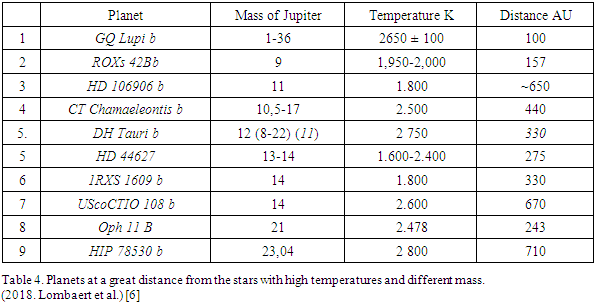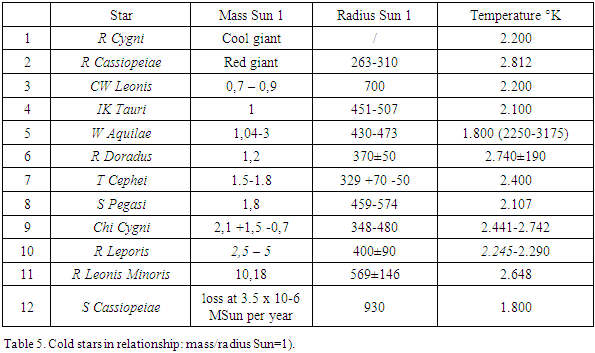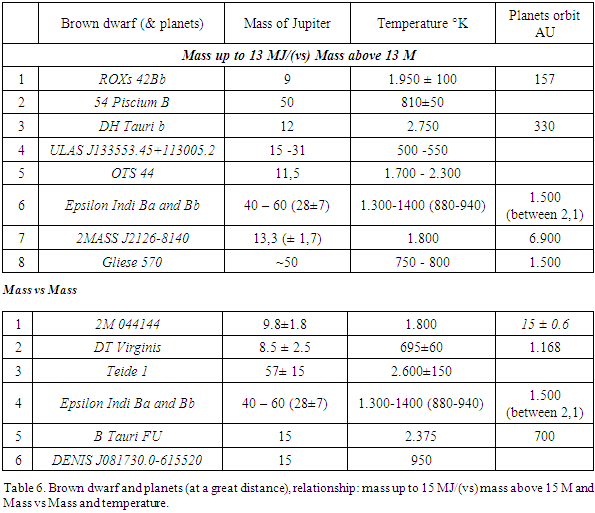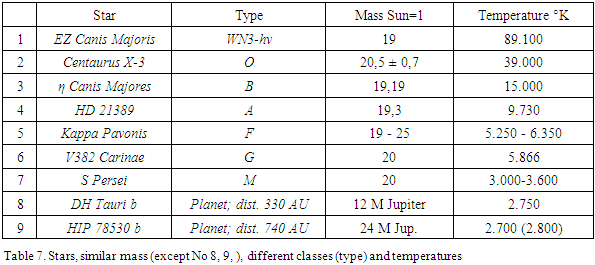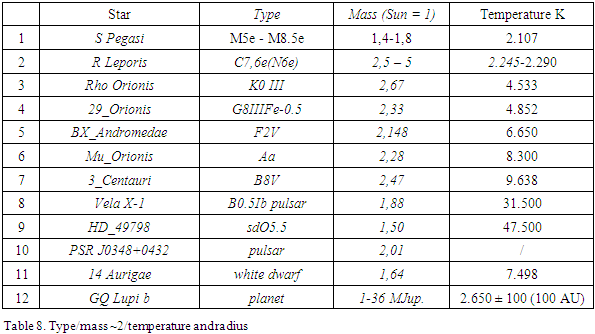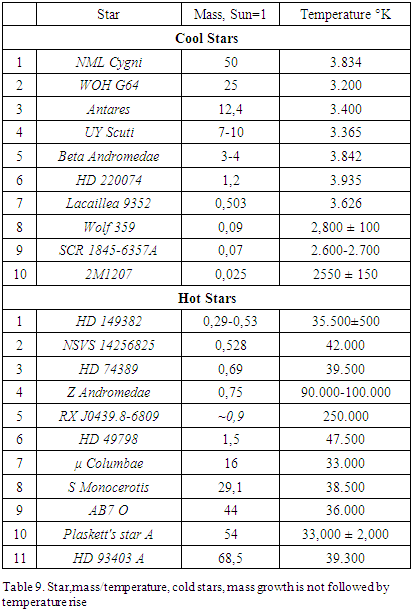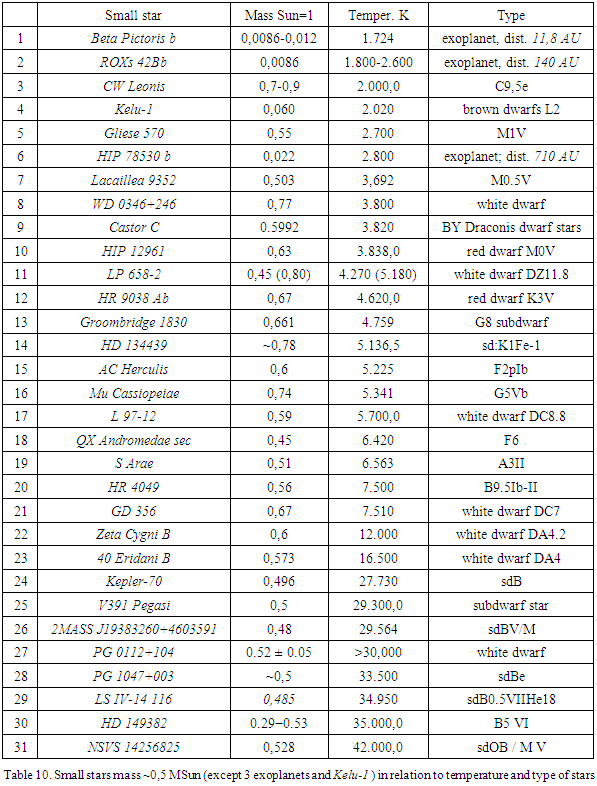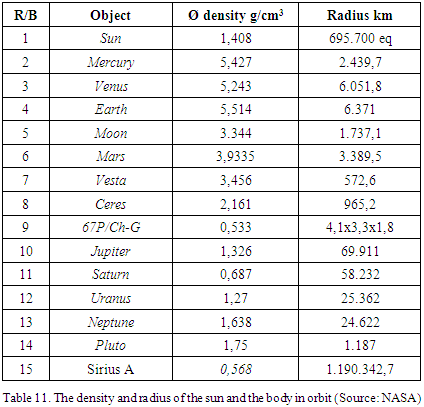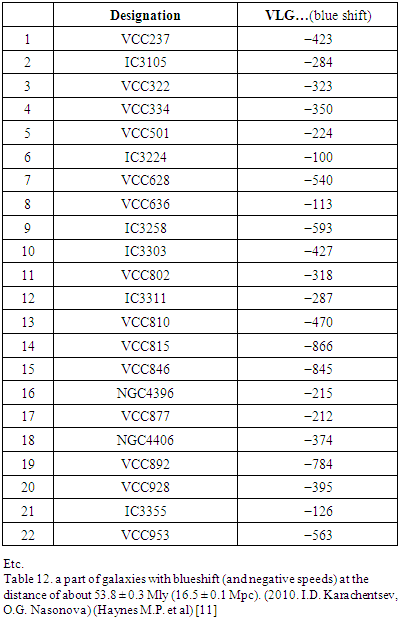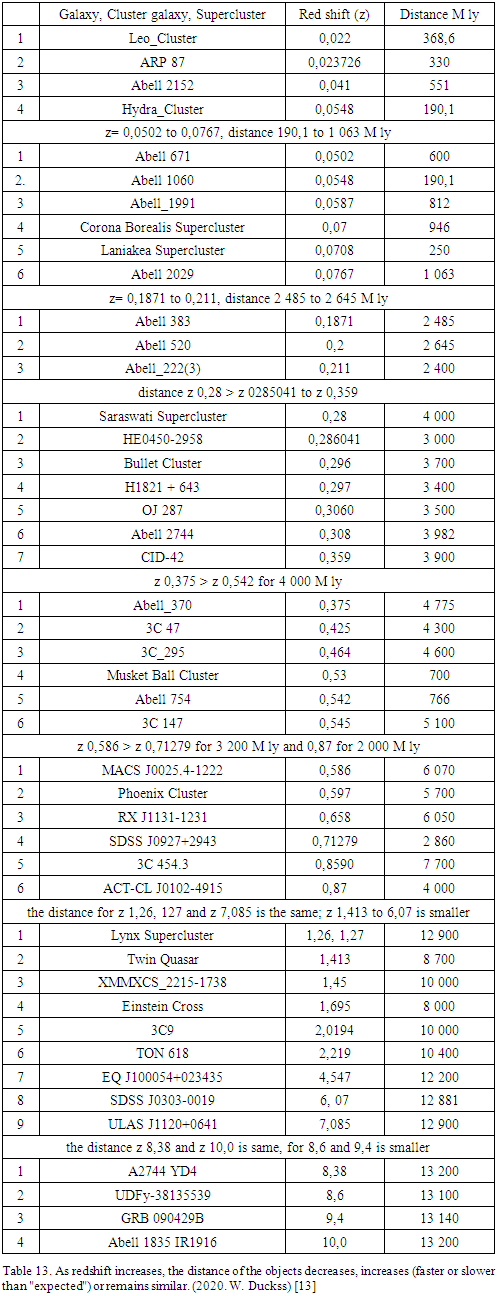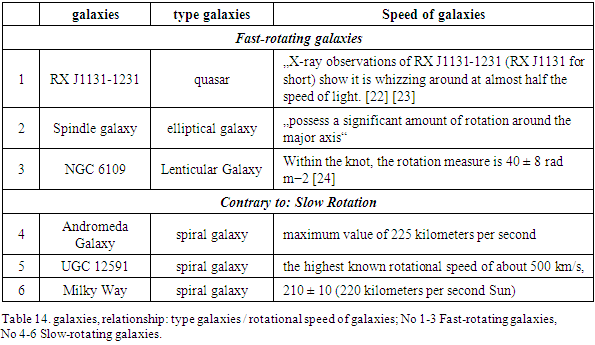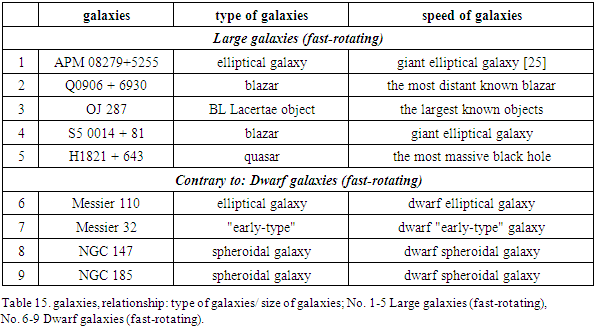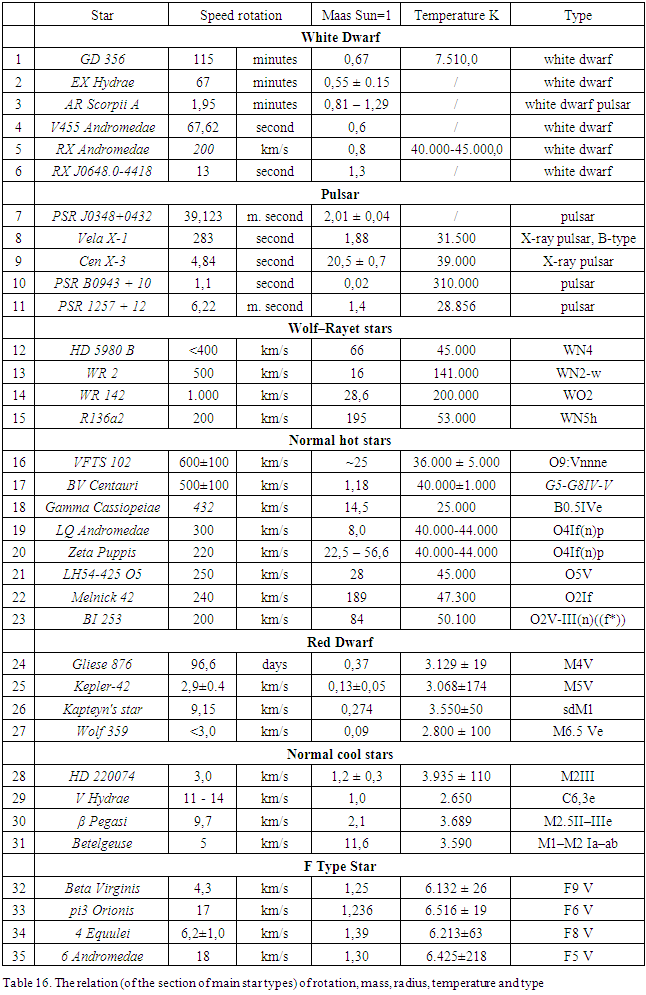| [1] | https://en.wikipedia.org/wiki/Black_hole#Physical_properties „General Relativity“ 2010 Robert M. Wald |
| [2] | https://en.wikipedia.org/wiki/Milky_Way#Galactic_Center https://arxiv.org/abs/0903.0946 "Stellar populations in the Galactic bulge" E. Vanhollebeke, M.A.T. Groenewegen, L. Girardi |
| [3] | http://www.astrodigital.org/astronomy/milkywaygalaxy.html https://pages.uoregon.edu/imamura/SCS123/lecture-2/bulge.html "Bulge of the Milky Way" University of Oregon |
| [4] | http://www.chemicool.com/elements/helium-facts.html "Facts about Helium" 2017. Dr. Doug Stewart |
| [5] | http://www.sciencepublishinggroup.com/journal/paperinfo?journalid=301&doi=10.11648/j.ajaa.20180603.13 American Journal of Astronomy and Astrophysics, Paper Number: 3011059, Paper Title: How are the spiral and other types of galaxies formed? Nov. 2018. W.Duckss. |
| [6] | https://arxiv.org/pdf/1601.07017.pdf 2018. „Constraints on the H2O formation mechanism in the wind of carbon-rich AGB stars?“ R. Lombaert 1, 2, L. Decin 2, 3, P. Royer 2, A. de Koter 2, 3, N.L.J. Cox2, E. González-Alfonso 4, D. Neufeld 5, J. De Ridder2, M. Agúndez 6, J.A.D.L. Blommaert 2, 7, T. Khouri1, 3, M.A.T. Groenewegen8, F. Kerschbaum 9, J. Cernicharo 6, B. Vandenbussche 2, and C. Waelkens 2 1. |
| [7] | http://stars.astro.illinois.edu/sow/star_intro.html James B. Kaler, last modified on 19 June, 2013. „Below 13 Jupiters, fusion stops altogether.“ |
| [8] | https://arxiv.org/abs/1702.08611 2017. „Titan's Atmosphere and Climate“ Sarah M. Hörst |
| [9] | https://arxiv.org/ftp/arxiv/papers/1704/1704.01511.pdf „Understanding of Pluto atmopsheric dynamics and behaviour from New Horizons mission“ 2019. A. A. Mardon, G. Zhou |
| [10] | https://web.archive.org/web/20091122194548/http://starhop.com/library/pdf/studyguide/high/SolInt-19.pdf 22 Nov 2009 https://en.wikipedia.org/wiki/Sunlight#Intensity_in_the_Solar_System |
| [11] | https://arxiv.org/abs/1007.1580v1 2010. „Blueshifted galaxies in the Virgo Cluster“ I.D. Karachentsev, O.G. Nasonova https://iopscience.iop.org/1538-3881/142/5/170/suppdata/aj405002t1_mrt.txt „The Arecibo Legacy Fast ALFA Survey: The {alpha}.40 HI Source Catalog, its Characteristics and their Impact on the Derivation of the HI Mass Function“ Haynes M.P., Giovanelli R., Martin A.M., Hess K.M., Saintonge A., Adams E.A.K., Hallenbeck G., Hoffman G.L., Huang S., Kent B.R., Koopmann R.A., Papastergis E., Stierwalt S., Balonek T.J., Craig D.W., Higdon S.J.U., Kornreich D.A., Miller J.R., O'Donoghue A.A., Olowin R.P., Rosenberg J.L., Spekkens K., Troischt P., Wilcots E.M. (244 galaxies with blue shift) |
| [12] | https://www.aanda.org/articles/aa/abs/2019/11/aa36337-19/aa36337-19.html 'Effect of galaxy mergers on star formation rates' W. J. Pearson, L. Wang, M. Alpaslan, I. Baldry, M. Bilicki, M. J. I. Brown, M. W. Grootes, B. W. Holwerd, T. D. Kitching, S. Kruk, F. F. S. van der Tak |
| [13] | https://bircu-journal.com/index.php/birex/article/view/704/pdf 2020. "Comoving Distance- Light Travel Distance (Treatise)" W. Duckss |
| [14] | http://cbat.eps.harvard.edu/nova_list.html „CBAT List of Novae in the Milky Way“ 2019 Harvard.edu |
| [15] | https://www.foxnews.com/science/the-suns-turbulent-north-pole-looks-like-a-spooky-vortex-in-this-composite-image Science Published December 6, 2018, „The Sun's turbulent north pole looks like a spooky vortex in this composite image“ the European Space Agency's Proba-2 satellite. Proba-2 launched in 2009 to observe space weather. (ESA/Royal Observatory of Belgium) |
| [16] | https://www.pbs.org/wgbh/aso/databank/entries/dp29hu.html „Hubble finds proof that the universe is expanding“ 1929 |
| [17] | http://inspirehep.net/record/1397595/plots?ln=hr The rotation of Galaxy Clusters - Tovmassian, Hrant M. Astrofiz. 58 (2014) 353-363, Astrophysics 58 (2015) 328 arXiv:1510.03489 [astro-ph.CO] |
| [18] | https://www.nasa.gov/centers/goddard/news/releases/2010/10-023.html 03.10. 2010. „Mysterious Cosmic 'Dark Flow' Tracked Deeper into Universe“ |
| [19] | https://www.nasa.gov/centers/goddard/news/topstory/2008/dark_flow.html 09.23.2008. „Scientists Detect Cosmic 'Dark Flow' Across Billions of Light Years“ Francis Reddy / Rob Gutro, Goddard Space Flight Center, Greenbelt, Md |
| [20] | https://cordis.europa.eu/project/rcn/102627/reporting/en 16 August 2017 „Final Report Summary - CODITA (Cosmic Dust in the Terrestrial Atmosphere)“ |
| [21] | https://www.nationalgeographic.com/news/2015/06/150617-moon-dust-cloud-comet-space/ Drake, Nadia; 17, National Geographic PUBLISHED June (17 June 2015). "Lopsided Cloud of Dust Discovered Around the Moon". National Geographic News |
| [22] | https://www.spacetelescope.org/static/archives/releases/science_papers/heic1506a.pdf 2015. "The non-gravitational interactions of dark matter in colliding galaxy clusters" David Harvey, Richard Massey, Thomas Kitching, Andy Taylor, Eric Tittley |
| [23] | http://www.eltereader.hu/media/2014/04/Atmospheric_Chemistry_READER.pdf „Atmospheric Chemistry“ István Lagzi; Róbert Mészáros; Györgyi Gelybó; Ádám Leelőssy, Copyright © 2013 Eötvös Loránd University. |
| [24] | https://www.nasa.gov/feature/goddard/2019/with-mars-methane-mystery-unsolved-curiosity-serves-scientists-a-new-one-oxygen Nov. 12, 2019. „With Mars Methane Mystery Unsolved, Curiosity Serves Scientists a New One: Oxygen“ |
| [25] | http://www.globalscientificjournal.com/researchpaper/What-is-happening-to-oxygen-and-hydrogen.pdf 2018. W.D |
| [26] | https://www.academia.edu/17760569/The_Oort_cloud._Speed_of_light_is_not_the_limit 2014. W. D. „The Oort cloud. Speed of light is not the limit“ |









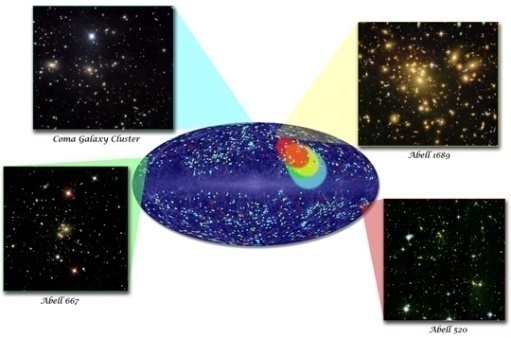

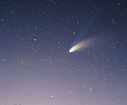
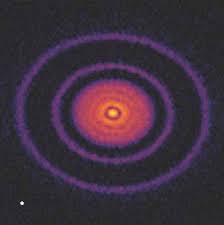
 Abstract
Abstract Reference
Reference Full-Text PDF
Full-Text PDF Full-text HTML
Full-text HTML